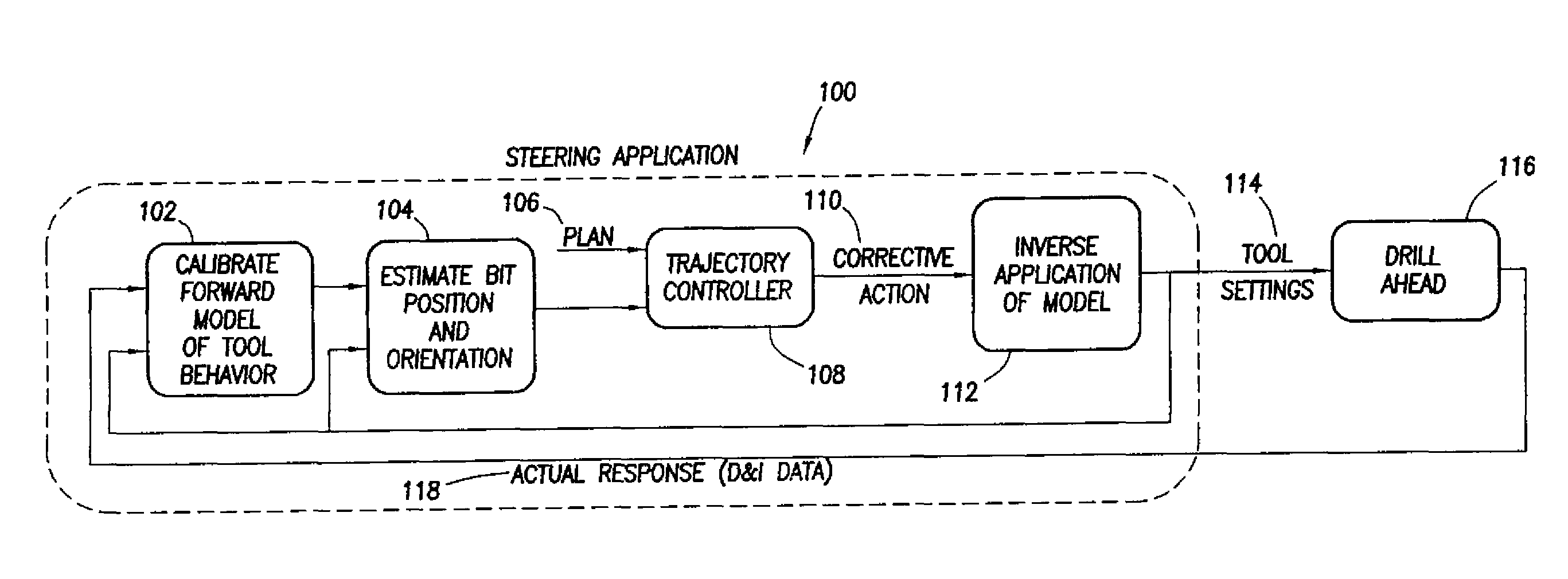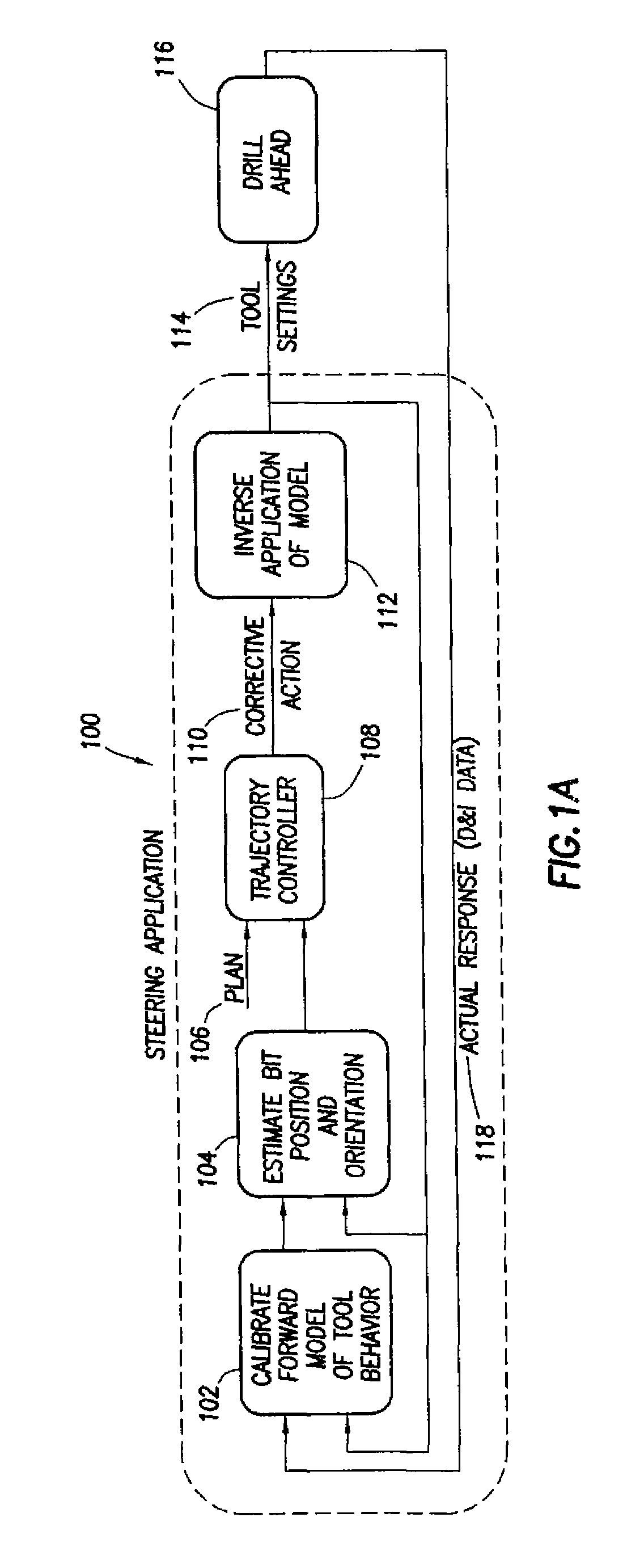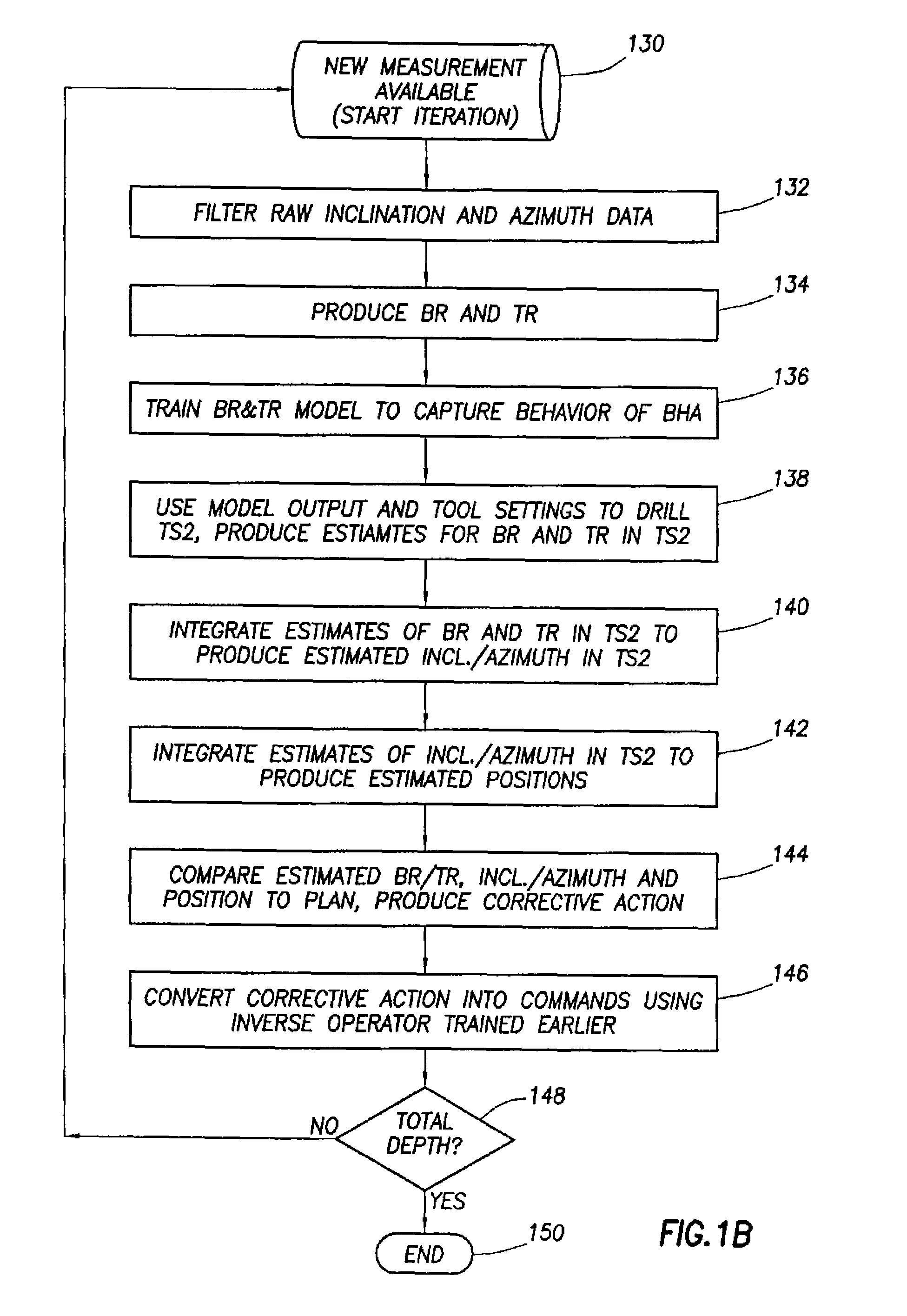Method of automatically controlling the trajectory of a drilled well
a technology of automatic control and drilling well, which is applied in the direction of directional drilling, adaptive control, instruments, etc., can solve the problem of drilling bit veering o
- Summary
- Abstract
- Description
- Claims
- Application Information
AI Technical Summary
Benefits of technology
Problems solved by technology
Method used
Image
Examples
Embodiment Construction
[0023]The current invention provides a system and method of automatically controlling the trajectory of a drilled well. To automatically control the trajectory of a drilled well, a steering behavior model, which can be mathematical, software, or other digital form, is provided. The steering behavior model can use any methodology or tool to simulate the steering behavior of a drill string, or more specifically a bottom-hole assembly. The present invention relates to the calibration of a steering behavior model to minimize a variance between the steering behavior model of the well and the actual drilled well. FIG. 1A illustrates an example flow diagram. The steering application 100 can be used to create an automatic trajectory controller and / or an automatic steering application 100. A controller can be a computer. A controller can be any electrical or mechanical device, for example, for determining any corrections necessary to align an actual trajectory with a well plan or any other r...
PUM
 Login to View More
Login to View More Abstract
Description
Claims
Application Information
 Login to View More
Login to View More - R&D
- Intellectual Property
- Life Sciences
- Materials
- Tech Scout
- Unparalleled Data Quality
- Higher Quality Content
- 60% Fewer Hallucinations
Browse by: Latest US Patents, China's latest patents, Technical Efficacy Thesaurus, Application Domain, Technology Topic, Popular Technical Reports.
© 2025 PatSnap. All rights reserved.Legal|Privacy policy|Modern Slavery Act Transparency Statement|Sitemap|About US| Contact US: help@patsnap.com



